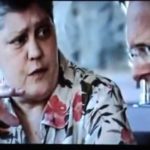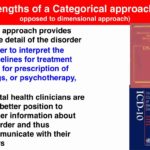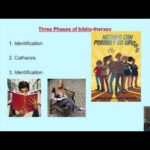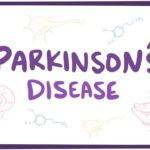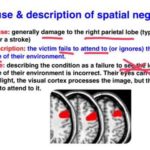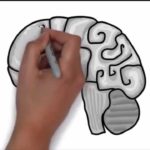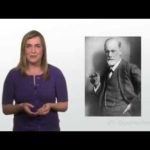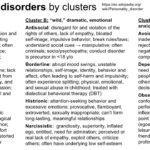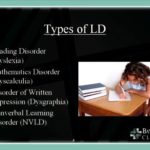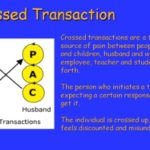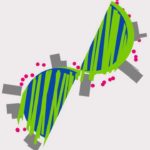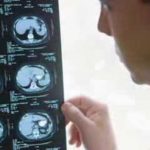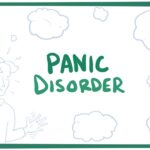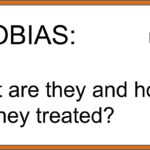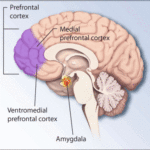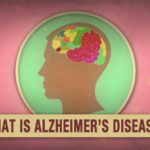Category: Clinical Psychology
Alien Limb Phenomenon
The alien limb phenomenon is a phenomenon in which patients experience involuntary movements in a limb, which is accompanied by a feeling that the limb does not belong to them. There is some evidence to support the notion that alien … Continue reading →
Categorical Approaches to the Classification of Mental Disorders
Contrary to the dimensional approach, categorical approaches focus on the presence or absence of a particular condition or set of symptoms. The most commonly used diagnostic manuals, such as DSM and ICD use a categorical approach in their classification of … Continue reading →
Childhood Disintegrative Disorder
Childhood disintegrative disorder, as described in ICD-10, is a pervasive developmental disorder seen in infants, in which a period of normal development is followed by a period in which the child loses acquired skills. Examples can include deterioration in social behaviours, … Continue reading →
Catalepsy
Catalepsy is a psychomotor disturbance in which a person maintains a fixed bodily posture, and may also maintain a bodily posture that someone else moves them into.
Capgras Syndrome or Capgras Delusion
Capgras syndrome is a disorder in which an individual holds the delusional belief that a person they are familiar with is in fact an impostor who has replaced the real person. The syndrome has been observed in individuals with brain … Continue reading →
Bibliotherapy
Bibliotherapy can be an element of psychotherapy, in which the client is assigned specific literature as part of the therapeutic process.
Astereognosis
Astereognosis is an inability to recognize objects by touch, and is associated with damage to cortical areas of the brain.
Pyromania
Pyromania is described in DSM-5 as a disorder in which an individual engages in repeated purposeful firesetting, as a means of achieving pleasure, gratification, or relief when setting fires or when witnessing or participating in their aftermath, and where other … Continue reading →
Ganser’s Syndrome
Ganser syndrome is a rare and somewhat poorly understood condition, currently categorized in DSM-5 and ICD-10 as a dissociative disorder, although it’s classification has changed over time. It was first presented by German neurologist Sigbert Ganser in 1897, where he … Continue reading →
Schizoaffective Disorder
Schizoaffective disorder is defined in DSM-V as a disorder where the active-phase symptoms of schizophrenia occur together with a major depressive or manic episode. Similarly, the disorder is described in ICD-10 as a disorder in which both affective and schizophrenic … Continue reading →
Prosopagnosia or face Blindness
Prosopagnosia is a neurological disorder where a person is unable to or has difficulty with recognizing faces. Prospagnosia can be associated with brain damage or neurological disease, and can also be congenital.
Sleep State Misperception or Subjective Insomnia
Sleep state misperception is a phenomenon in which a subject believes that he or she is sleeping very little or not at all, when in fact they are sleeping for longer than they think.
Parkinson’s Disease
Parkinson’s disease is a neurodegenerative disease associated with the degeneration of dopaminergic neurons in the substantia nigra region of the midbrain. The specific causes of the disease are not currently known, and diagnoses are based on clinical criteria. Symptoms are … Continue reading →
Spatial Neglect
Spatial neglect is a neurological deficit in which a specific area of a person’s perceptual field appears to be ‘missing’ from their attention, in other words, the individual appears to be unable to attend to stimuli from within that specific … Continue reading →
Alexia
Alexia is an impairment in which an individual experiences difficulties in comprehending written language, yet is still able to produce written language.
Dementia
Dementia is a syndrome in which there is impairment in several brain functions such as memory, learning, judgement and orientation, and where these are often accompanied by deterioration in motivation, emotional control and social behaviour. Dementia is usually of a … Continue reading →
Apraxias
Apraxias are defined as a set of motor impairments in which patients have difficulty performing learned movements in which they have previously been skilled. Apraxias can be seen for a wide range of specific types of movement, including organizing sets of movements, aspects of speech, … Continue reading →
Body Integrity Identity Disorder
Body integrity identity disorder is a rare condition in which a patient will report a strong desire for one or more of their healthy limbs to either be amputated or rendered non-functional. The disorder is not currently included in DSM … Continue reading →
Anosmia
Anosmia is the inability to smell, and can be temporary or permanent. Causes can be normal ageing, obstruction (such as in the case of an infection or tumour), physical trauma, vitamin deficiency, and more. In the case of congenital anosmia, … Continue reading →
Client-centred Therapy or Person-centred Therapy
Client-centred therapy is an approach to psychotherapy developed by the American psychologist Carl Rogers. In his book Significant Aspects of Client-Centered Therapy, Rogers described this approach as attempting to create a situation in which the forces for growth within a person could … Continue reading →
Existential-humanistic Psychotherapy
Existential-humanistic psychotherapy focuses on aiding people in making decisions and creating a meaningful existence based on their own personal values. In general, existential psychology sees the person as a complete individual rather than the sum of his or her parts, … Continue reading →
Dimensional Approach to Classification of Mental Disorders
In the dimensional approach to mental disorders, symptoms involving cognition, moods and behaviors are quantified on a scale according to the extent that the patient presents them.
Biopsychosocial Model
The biopsychosocial model is a long-standing approach both in medicine and psychology, which integrates biological, social and scientific paradigms in the assessment and treatment of mental illnesses.
Depersonalization/Derealization Disorder
Depersonalization/Derealization Disorder (DSM-V) or depersonalization-derealization syndrome (ICD-10) is a disorder in which the patient complains of experiences of unreality, detachment, or being an outside observer with respect to one’s thoughts, feelings, sensations, body, or actions (depersonalization), or of experiencing unreality or detachment … Continue reading →
Eating Disorders
Eating disorders are a set of disorders in which patients suffer from severe irregularities in eating behaviour, have issues regarding body image, and engage in unhealthy methods of regulating body weight (such as purging and extreme levels of exercise). Examples … Continue reading →
Aversion Therapy
Aversion therapy is a behavioural modification technique, which uses the principles of classical conditioning. An unpleasant stimulus is paired with an unwanted behaviour (such as nail-biting, smoking) in order to create an aversion to it. Examples of the types of … Continue reading →
Harm Reduction Therapy
The term “harm reduction” was introduced in the 1980s, to describe public health approaches to reducing the spread of blood-borne diseases associated with drug use (1), and the paradigm has since proven to be a useful approach for psychotherapy. Harm … Continue reading →
Family Therapy
Family therapy is a branch of psychotherapy which views human behaviour and psychological disturbances as residing in a family system rather than stemming from just one individual. Family Therapy was first practised in the early 1900s, during a time when … Continue reading →
Exposure Therapy
Exposure therapy is a form of cognitive behavioral psychotherapy, commonly used in the treatment of post-traumatic stress disorder (PTSD) and phobias. Exposure therapy is a method where the patient learns to face and gain control of fear without being further … Continue reading →
Psychodrama
Psychodrama is a branch of psychotherapy in which clients use spontaneous role-playing to explore and gain insight into their personal lives. Psychodrama is “a way of practicing living without being punished for making mistakes” (1). In using elements of theater, … Continue reading →
Feminist Therapy
Feminist therapy is a general approach to therapy in which the therapist focuses on: – increasing awareness on issues such as sexism, racism, heterosexism, and ageism; – examining how inequality, injustice, and power imbalances may limit an individual’s potential; – … Continue reading →
Couples Therapy
Couples therapy is a branch of psychotherapy for people seeking to enhance their marital satisfaction or correct marital dysfunction. In couples therapy, it is the relationship that is seen as being the patient as opposed to one or both of … Continue reading →
Cyclothymia or Cyclothymic Disorder
Cyclothymia is a type of chronic mood disorder widely considered to be a milder form of bipolar disorder, and is characterized by numerous extreme mood disturbances, with periods of hypomanic symptoms. The symptoms include euphoria, extreme optimism, inflated self-esteem, rapid … Continue reading →
Insomnia
As presented in ICD-10, insomnia is a condition of unsatisfactory quantity and/or quality of sleep, which persists for a considerable period of time. This includes difficulty falling asleep, difficulty staying asleep, or early final wakening. Insomnia is typically followed by … Continue reading →
Self-harm
Self-harm is a general term for any self-inflicted physical injury, often considered a manifestation of a psychological or psychiatric disorder.
Anosognosia
The term anosognosia refers to a phenomenon in which some patients suffering from acquired neurological disorders appear to exhibit denial or unawareness of aspects of their disorder. Many cases have been reported throughout antiquity, but the term was first introduced … Continue reading →
Classification and Diagnosis of Disorders
The diagnosis and classification of disorders allows professionals to make important decisions regarding treatment, and promotes communication and research as well as highlighting aspects of etiology. DSM-V, the manual of the American Psychiatrists Association (APA) is a leading diagnostic tool … Continue reading →
Anxiety Disorders
Anxiety disorders are a group of disorders characterized by anxiety for and avoidance of situations where there is no actual danger. Symptoms associated with anxiety disorders are nausea, muscle tension, feelings of exhaustion, restlessness, agitation, irritability and insomnia. The … Continue reading →
Mood Disorders
Mood disorders are disorders in which the fundamental disturbance is a change in affect or mood, to depression (with or without associated anxiety) or to mania. Major changes in mood are usually accompanied by a change in the overall level … Continue reading →
Somatoform Disorders or Somatic Symptom and Related Disorders
Somatoform disorders are described in ICD-10 as a set of disorders whose main feature is repeated presentation of physical symptoms together with persistent requests for medical investigations, in spite of repeated negative findings and reassurances by doctors that the symptoms have no … Continue reading →
Substance-Related Disorders
Substance-related disorders are conditions involving a negative or dangerous pattern of alcohol or drug use, and substance dependence.
Personality Disorders
Personality disorders are defined by experiences and behaviours which deviate from societal norms and expectations. People diagnosed with a personality disorder may experience difficulties in cognition, emotiveness, interpersonal functioning or control of impulses. Personality disorders are inflexible and pervasive across … Continue reading →
Dissociative Disorders
Dissociative disorders are conditions that involve disruptions or breakdowns of memory, awareness, identity or perception. People with dissociative disorders utilize dissociation, a defense mechanism, pathologically and involuntarily. Dissociative disorders are thought to be primarily caused by psychological trauma. DSM-V describes … Continue reading →
Learning Disabilities
Learning disabilities affect several areas of functioning, and the sufferer will have difficulty to learning as quickly or in the same way as someone who is not affected by a learning disorder. People with a learning disability have trouble performing … Continue reading →
Pervasive Developmental Disorders
Pervasive developmental disorders (PDD) are a group of five disorders characterized by delays in the development of multiple basic functions including socialization and communication. The pervasive developmental disorders are autism, childhood disintegrative disorder, Rett syndrome and pervasive developmental disorder not … Continue reading →
Depression
Depression is a state of sadness and pessimistic ideation, in which the sufferer loses interest in normal pleasurable activities, and often experiences such things as insomnia, loss of appetite, recurrent thoughts of suicide and feelings of inadequacy or guilt. Depression … Continue reading →
Auditory Hallucinations
Auditory hallucinations involve the perception of speech or other sounds in the absence of external auditory stimuli. In some cases, the individual may not be aware of the fact that they are hallucinations, and can experience them as being real. … Continue reading →
Dissociative Identity Disorder
Dissociative identity disorder is a disorder characterized by the apparent presence of two or more distinct personalities or identities within one individual. The identities are enduring and they relate to the environment in distinctive ways. Traumatic experiences are often associated … Continue reading →
Dyslexia
As presented in ICD-10, the main feature of dyslexia is a specific and significant impairment in the development of reading skills, not solely accounted for by mental age, visual acuity problems, or inadequate schooling. Reading comprehension, word recognition, oral reading … Continue reading →
Attachment-Focused Therapy
Attachment focused therapy is a form of therapy based on attachment theory, with the goal of providing the individual with a safe environment in which he or she can learn and develop. This form of therapy has proven to … Continue reading →
Transactional Analysis
Transactional analysis is a theory and form of psychotherapy developed by Eric Berne. The approach assumes that when interacting with others, people tend to adapt three main ego states, namely that of a child, an adult and a parent. The … Continue reading →
Autism
Autism is a group of developmental disorders affecting social, communicative and cognitive abilities, and can be a lifelong condition of disability. More severely affected people often need lifelong care, while less severe cases might still require individual support. The various … Continue reading →
Tourette Syndrome
Tourette’s syndrome is diagnosed when both motor and vocal tics (sudden, rapid, recurrent, nonrhythmic, stereotyped motor movements or vocalizations) are experienced persistently, although these do not have to occur concurrently. Vocal tics are often accompanied by throat-clearing, and grunting, and in some … Continue reading →
Alcoholism
Alcoholism is a broad term for problems related to excessive alcohol consumption, such as difficulty controlling drinking, preoccupation with alcohol, continuous use of alcohol despite the problems caused, and withdrawal symptoms when ceasing or restricting one’s drinking. The uncontrolled consumption … Continue reading →
Psychotic Depression
In DSM-V, psychotic depression is classified as major depressive disorder, with additional symptoms of delusions or hallucinations.
Intermittent Explosive Disorder
Intermittent explosive disorder (IED) is a behavioural disorder characterized by extreme expressions of anger, often to the point of uncontrollable rage, which are disproportionate to the situation at hand. Individuals with IED have brief outbursts with a variety of bodily … Continue reading →
Dysthymia or Persistent Depressive Disorder
Persistent depressive disorder (DSM-V) or dysthymia (ICD-10) is a less severe but longer lasting form of depression, lasting several years. A combination of antidepressants and psychotherapy are often useful in treating dysthymia, although symptoms can be integrated into the personality of … Continue reading →
Delusional Disorder
Delusional disorder is described in DSM-V and ICD-10 as characterized either of a single delusion or of a set of related delusions which are long-lasting (one month or longer), but where the criteria for schizophrenia have not been met. In … Continue reading →
Adjustment Disorder or Situational Disorder
Adjustment disorder is a disorder where an individual is unable to cope with a life stressor or stressors. It can be difficult to distinguish from a normal reaction to traumatic life events, but the diagnosis can be given in cases … Continue reading →
Body Dysmorphic Disorder
Body dysmorphic disorder is a type of somatoform disorder involving an intense and persistent preoccupation with a real or imagined defect in body image. Criteria for the diagnosis, as described in DSM-V, include repetitive behaviours such as excessive grooming, skin picking and reassurance … Continue reading →
Hypochondria
As presented in ICD-10, the essential feature of hypochondria is a persistent preoccupation with the possibility of having one or more serious and progressive physical illness, despite the absence of an actual medical condition. Patients manifest persistent somatic complaints or … Continue reading →
Stockholm Syndrome
Stockholm syndrome is a psychological phenomenon in which hostages express empathy, sympathy and have positive feelings towards their captors, sometimes to the point of defending them. These feelings are generally considered irrational in light of the danger or risk endured … Continue reading →
Intensive Exposure Therapy or Flooding
Flooding is a form of exposure therapy, where the phobic object or situation is presented in full, and the phobic person endures the phobic reaction until it subsides.
Virtual Reality Exposure Therapy
Virtual reality exposure therapy is a form of exposure therapy, where virtual reality equipment is used to treat patients with anxiety disorders and phobias. The method gives the therapist complete control over many stimulus parameters, and has proven to be … Continue reading →
Solution Focused Therapy
Solution focused therapy is a branch of psychotherapy which focuses on the positive outcomes clients want to achieve, rather than on the problems that they currently face. In other words, the focus is on the solution and not the problem. … Continue reading →
Light Therapy or Phototherapy
Phototherapy is a form of therapy typically used to treat people suffering from seasonal affective disorder and certain sleep disorders, where the patient is exposed to a source of bright light on a daily basis.
Primal Therapy
Primal therapy is a branch of psychotherapy in which repressed psychic pain is alleviated by re-experiencing a painful experience, thus bringing the pain to conscious awareness where it can be dealt with. Created in 1968 by Arthur Janov and his … Continue reading →
Multidimensional Family Therapy
Multidimensional family therapy is a form of therapy in which substance abuse problems and related behaviours in young people are seen as being influenced by interactions and sub-systems within their family. This type of therapy is flexible in terms of … Continue reading →
Logotherapy
Logotherapy is a branch of psychotherapy founded on the belief that the most powerful motivating drive in humans is the search for meaning in life. The principles of logotherapy are: – meaning can be found in one’s life in all … Continue reading →
Art Therapy
Art therapy is based on the idea that the process of creating art facilitates recovery and that it is a form of nonverbal communication of internal thoughts and feelings. It supports the belief that everyone has the capacity to express … Continue reading →
Exposure and Response Prevention
Exposure and response prevention is a therapeutic technique used to treat sufferers of obsessive compulsive disorder. The exposure part of the practice involves entering or imagining situations which arouse anxiety and elicit obsessive reactions. The individual is acquanted with the … Continue reading →
Biofeedback
Biofeedback is a method of helping patients become aware of involuntary physiological responses, which enables them to learn to consciously control them. Examples of responses are changes in heart-rate, blood pressure, brain wave frequencies (associated with states of alertness and … Continue reading →
Reward Erosion
Reward erosion is a term used in relation to depression and other disorders, and refers to a state in which a depressed person no longer engages in pleasurable and rewarding activities.
Behavioural Activation
Behavioural activation is a therapeutic method, where the aim is to increase the activity level of the patient by encouraging him or her to participate in activities which are rewarding or positive.
Panic Attacks
Panic attacks are bouts of intense fear or apprehension which have a sudden onset and can last from minutes to several hours. People who experience a panic attack (commonly those experiencing it for the first time) will often fear they … Continue reading →
Adlerian Psychotherapy
Rather than utilizing a symptom identification model, Adlerian therapy takes a holistic and positive approach, assuming that people have an inherent sense of inferiority, which is the source of human striving. In the Adlerian approach, mal-adaptive behaviour is seen to … Continue reading →
Mental Retardation
As defined in ICD-10, mental retardation is a condition of arrested or incomplete cognitive developmen, which is particularly characterized by impairment manifested during the developmental period, of skills which contribute to a person’s overall level of intelligence (cognitive, language, motor, … Continue reading →
Rational Emotive Therapy or Rational Emotive Behaviour Therapy
<iframe width=”420″ height=”236″ src=”https://www.youtube.com/embed/HOi48z4g45Q?controls=0″ title=”YouTube video player” frameborder=”0″ allow=”accelerometer; autoplay; clipboard-write; encrypted-media; gyroscope; picture-in-picture” allowfullscreen></iframe> Rational emotive behaviour therapy (REBT) was originated in 1955 by the American psychologist Albert Ellis, and was the first of the now widely used cognitive … Continue reading →
Seasonal Affective Disorder
Seasonal affective disorder is a form of mood disorder (described in ICD-10 as a recurrent depressive disorder), which is characterized by recurrent depressive episodes which tend to occur in winter months. The disorder is thought to be related to … Continue reading →
Electroconvulsive Therapy (ECT)
<iframe width=”420″ height=”236″ src=”https://www.youtube.com/embed/NGjFeBoyp1s?controls=0″ title=”YouTube video player” frameborder=”0″ allow=”accelerometer; autoplay; clipboard-write; encrypted-media; gyroscope; picture-in-picture” allowfullscreen></iframe> Electroconvulsive therapy (ECT) is a medical procedure where, after administering an anesthetic, a current is passed through the patient’s brain in order to produce a … Continue reading →
Catatonia
Catatonia is a state of constrained postures, unresponsiveness to stimuli, mutism, repetitive speech and imitative gestures. It is associated with many psychiatric disorders, including catatonic schizophrenia and bipolar disorder, as well as drug abuse and overdoses. The term was introduced … Continue reading →
Thought Block
Thought block is a phenomenon in which a person abruptly interrupts his or her conversation and is silent for a few seconds, experiencing a complete cessation of all thought, before resuming on a different topic.
Gestalt Therapy
Gestalt therapy is a branch of psychotherapy which places emphasis on a person’s personal responsibility, and which helps individuals focus on the present moment, whether it be in a session with the therapist or in their everyday life. Gestalt therapy … Continue reading →
Oneirophrenia or Oneirism
Oneirophrenia is a dreamlike state associated with drug use, sleep deprivation and sensory deprivation.
Hot-Seat Technique
The hot-seat technique is a Gestalt therapy technique developed by Fritz Perls, where the therapist works with the client in front of a group, and will often be confrontational. This technique aims to increase the self-awareness of the client.
Dereflection
Dereflection is a technique in logotherapy, where a client is encouraged to shift his attention away from himself, and to focus on other people or on positive things.
Depersonalization
Depersonalization is a state in which one experiences a detachment from the perception of self, and a feeling of not being in one’s body. The diagnosis of depersonalization disorder can be given, if there is significant distress and impairment.
Critical Incident Stress Debriefing
Critical incident stress debriefing is a technique designed to help people deal with the normal reactions that occur after a traumatic event. The intervention is peer-driven, and focuses on processing the facts of the traumatic event, as well as identifying … Continue reading →
Cognitive Restructuring
Cognitive restructuring refers to the process in cognitive therapy of helping a client challenge their thoughts and beliefs and to adopt more realistic and constructive ways of thinking.
Socratic Questioning
Socratic questioning is a technique used in cognitive therapy, where a therapist will use a line of questioning in order to identify and challenge the validity of thoughts, beliefs and assumptions associated with a client’s troubles, and is based on … Continue reading →
Assertiveness Training or Assertion Training
Assertiveness training is a form of counseling where people learn to communicate wishes, needs and feelings in a direct and constructive manner.
Akinetopsia or Motion Blindness
Akinetopsia is an extremely rare disorder in which a patient has lost the ability to perceive motion in their visual field, despite being able to see stationary objects. Akinetopsia is attributed to specific lesions in the visual cortex. The term … Continue reading →
Parent Management Training
Parent management training (PMT) is a form of training for parents, for managing children and adolescents experiencing conduct problems in the home and at school. PMT utilizes principles of learning theory and behavior modification.
Sadism
The term sadism refers to taking pleasure from inflicting pain on others. Sexual sadism is classified in DSM-V and ICD-10 as a sexual disorder, and is described as using sexual fantasies, urges, or behaviours involving infliction of pain, suffering or … Continue reading →
Masochism
The term masochism refers to taking pleasure from having pain and humiliation inflicted on oneself. Sexual masochism is classified in DSM-V and in ICD-10 as a sexual disorder, and is described achieving sexual excitement from fantasies, urges, or behaviours involving … Continue reading →
Object Relations Psychotherapy
Object relations psychotherapy is a form of psychotherapy based on object relations theory, which places emphasis on the assumption that relationships in adulthood are shaped by family experiences during childhood. The ‘objects’ are internalized images of significant events and … Continue reading →
Motivational Interviewing
Motivational interviewing is a counseling style developed by the clinical psychologists William Miller and Stephen Rollnick, which seeks to elicit behavioural changes in clients by helping them to recognize, explore, and resolve ambivalent feelings they may have towards change. … Continue reading →
Attention-Deficit/Hyperactivity Disorder (ADHD)
Attention deficit/hyperactivity disorder is a neurobehavioural disorder of concentration, focus, activity and impulsivity. Sub-types of the disorder described in DSM-V are categorized as being predominantly inattentive, predominantly hyperactive-impulsive or the two combined. Symptoms emerge before the age of seven, and … Continue reading →
Bulimia Nervosa
Bulimia nervosa, as described in ICD-10, is an eating disorder which shares many psychological features with anorexia nervosa, including an excessive preoccupation with body shape and weight. Bulimia nervosa is characterized by repeated bouts of overeating, which are followed … Continue reading →
Anorexia Nervosa
Anorexia Nervosa, as described in ICD-10, is a disorder characterized by deliberate efforts to lose weight, and a distorted body self-perception. The disorder is most common in adolescent girls and young women, and can lead to hormonal and metabolic changes … Continue reading →
Generalized Anxiety Disorder
Generalized anxiety disorder is an anxiety disorder characterized by excessive, uncontrollable and often irrational worry about everyday things, disproportionate to the actual source of worry. As presented by ICD-10, the dominant symptoms are variable but include complaints of persistent … Continue reading →
Post-traumatic Stress Disorder
Post-traumatic stress disorder (PTSD) is a severe anxiety disorder which can develop after exposure to any event that results in psychological trauma. This event may involve the threat of death to oneself or to someone else, or to one’s own … Continue reading →
Schizophrenia
Schizophrenia is a term for a set of disorders characterized by distortions of thinking and perception, as well as inappropriate or flattened affect. The disorder was formerly called dementia praecox, and was renamed schizophrenia by the Swiss psychiatrist Eugen Bleuler … Continue reading →
Münchausen Syndrome
Münchausen Syndrome is a psychiatric factitious disorder wherein those affected feign disease, illness, or psychological trauma with predominantly physical signs and symptoms. People affected by this disorder will also have a history of recurrent hospitalization, and dramatic, untrue, and extremely … Continue reading →
Panic Disorder
Panic disorder is an anxiety disorder characterized by recurring severe panic attacks which are not restricted to any particular situation or set of circumstances, and are therefore unpredictable. This can lead to stress, anxiety and worry in an individual, due … Continue reading →
Phobias
Phobias are categorized in DSM-V and ICD-10 as anxiety disorders, in which specific, well defined situations invoke anxiety, despite their not posing any danger to the individual. These situations are characteristically avoided or endured with dread. Phobias can either be … Continue reading →
Cognitive Behaviour Therapy
Cognitive behaviour therapy (CBT) is a psychotherapeutic approach in which practitioners learn to come to an understanding that thinking, behaviour, and affect are intertwined. By changing maladaptive thinking, one seeks to change behavioural patterns and general affect. The goal … Continue reading →
Dissociation
The concept of dissociation is a poorly understood one, and definitions have changed somewhat over time (1). An early (and possibly the first) usage of the term is attributed to the French psychiatrist Moreau De Tours in 1845, where … Continue reading →
Anxiety
Anxiety is a general state in which an individual experiences apprehension or worry. Although anxiety is a common experience of everyday life, irrational, prolonged and excessive anxiety can meet the criteria for anxiety disorders. Common reactions associated with anxiety … Continue reading →
Psychoanalysis
Psychoanalysis is a psychological and psychotherapeutic theory conceived in the late 19th and early 20th centuries by Austrian neurologist Sigmund Freud. Psychoanalysts generally believe that: A person’s development is determined by events in early childhood. Human behaviour, experience, and cognition … Continue reading →
Obsessive Compulsive Disorder
Obsessive compulsive disorder is an anxiety disorder characterized by intrusive thoughts producing feelings of unease, apprehension, fear, or worry, and by repetitive behaviors. Symptoms of the disorder can include excessive washing or cleaning, repeated checking, extreme hoarding, preoccupation with … Continue reading →
Narcissistic Personality Disorder
Narcissistic personality disorder is described in DSM-V as “pervasive pattern of grandiosity, need for admiration, and lack of empathy that begins by early adulthood and is present in a variety of contexts”. In ICD-10, narcissistic personality disorder is listed under … Continue reading →
Obsessive Compulsive Personality Disorder
Obsessive compulsive personality disorder is characterized in DSM-V as “A pervasive pattern of preoccupation with orderliness, perfectionism, and mental and interpersonal control, at the expense of flexibility, openness, and efficiency”, and is indicated by the prevalence of four or more … Continue reading →
Paranoid Personality Disorder
Paranoid personality disorder is characterized by a pervasive suspiciousness and distrust of others, as well as attributes such as being highly sensitive to and unforgiving of insults. See: in ICD-10
Histrionic Personality Disorder
Histrionic personality disorder is characterized by a persistent pattern of behaviours such as excessive expression of emotions, attention seeking, sensitivity, lack of consideration for others and suggestibility. See: in ICD-10
Antisocial Personality Disorder
Antisocial personality disorder is described in DSM-V as a pervasive pattern of disregard for and violation of the rights of others, which begins in childhood or early adolescence and continues into adulthood. Indications of this diagnosis can be unlawful behaviours, deceitfulness, impulsivity, aggressiveness, … Continue reading →
Schizotypal Personality Disorder
Schizotypal personality disorder is described in DSM-V and ICD-10 as comprising of discomfort with, and reduced capacity for close relationships, accompanied with cognitive or perceptual distortions and eccentric behaviour.
Schizoid Personality Disorder
Schizoid Personality Disorder is characterized both in DSM-V and ICD-10 as a pervasive pattern of withdrawal or detachment from social relationships and activities, with a preference for solitary activities, as well as a limited capacity to express feelings and to … Continue reading →
Avoidant Personality Disorder
Avoidant personality disorder is described in DSM-V as a pervasive pattern of social inhibition, feelings of inadequacy, and hypersensitivity to negative evaluation. The sufferer can display avoidance of social situations and personal contact as a result. The disorder is … Continue reading →
Borderline Personality Disorder
Borderline personality disorder is classified in DSM-V as instability of self-image, personal goals, interpersonal relationships, and affects, accompanied by impulsivity, risk taking, and/ or hostility. The disorder is conceptually similar to a disorder classified in ICD-10 as emotionally unstable personality … Continue reading →
Dependent Personality Disorder
Dependent personality disorder is characterized by behaviours such as pervasive and excessive reliance on other people to make everyday decisions, as well as lack of initiative, clinging behaviour, feelings of helplessness and incompetence, and difficulty expressing disagreement for fear … Continue reading →
Social Anxiety Disorder or Social Phobia
Social anxiety disorder is a persistent fear of social situations where unfamiliar people are present or where the sufferer fears scrutiny from others. Exposure to such situations can cause reactions such as blushing, hand tremor, nausea, an urge to urinate, … Continue reading →
Bipolar Disorders
Bipolar disorders are a class of mood disorders characterized by manic episodes, mixed episodes and usually major depressive episodes. DSM-V distinguishes between several types: bipolar I, bipolar II, cyclothymic disorder, substance/medication-induced bipolar and related disorder, bipolar and related disorder due … Continue reading →
Applied Behaviour Analysis
Applied behaviour analysis is an area of applied psychology focusing on analyzing, predicting and changing behaviours. Applied behaviour analysis can be useful in improving workplace organization and teaching situations, can help aid people in overcoming drug addiction, and can be … Continue reading →
Validity Testing
Validity testing is a process of testing the validity of a patient’s beliefs by questioning whether or not the beliefs are supported by objective evidence.
Systematic Desensitization or Graded Exposure
Systematic desensitization is a procedure for treating phobias, in which the patient is gradually exposed to the phobic object or situation without experiencing danger.
Shaping
Shaping is a technique where successive approximations to a desired behaviour are reinforced until the desired behaviour is carried out.
Reflection Technique
Reflection is a technique often used in client-centered therapy, where the therapist paraphrases or summarizes what a client says. This can show whether or not the therapist has understood what the client means, as well as helping the client gain … Continue reading →
Positive Unconditional Regard
Positive unconditional regard is a term coined by Carl Rogers, and refers to the act of showing a genuine and total acceptance for a client in a therapist-client relationship. Such an approach allows the client to feel safe and … Continue reading →
Empty Chair Technique
The empty chair technique is a gestalt therapy technique in which the client engages in a role-played conversation with an imagined person. The patient sits facing an empty chair, and imagines that a family member or some other specific person … Continue reading →
Covert Sensitization
Covert sensitization is a form of aversion therapy where the client is asked to imagine the unwanted behaviour, followed by imagining an aversive stimulus. This pairs the two without the client experiencing the situation in real life.
Cognitive Rehearsal
Cognitive rehearsal is a technique used in therapy where the therapist and patient work together to find ways in which a certain problem can be handled. By ‘rehearsing’ ways of dealing with a particular situation, the patient is then better … Continue reading →
Person Centered Therapy or Client-centered Therapy
Person centered therapy is a therapeutic approach introduced by Carl Rogers, where the traditional power difference between the roles of therapist and patient are brought to an even level. The client is assumed to be fully capable of finding … Continue reading →
Aphasias
An aphasia is an impairment of cognitive abilities related to comprehending and producing language, and is attributed to neurological damage or disease. The term was introduced by the French physician Armand Trousseau in 1864. Source: Trousseau, A (1864). Del’aphasie, … Continue reading →
Agnosia
The term “agnosia” was first introduced in 1891 by Sigmund Freud, and generally refers to an acquired loss of recognition, where although a given sensory modality appears to be intact, the ability to recognize an object, person or other specific … Continue reading →
Agoraphobia
Agoraphobia is defined in ICD-10 and DSM-V as an anxiety disorder where the sufferer experiences avoidance or anxiety in relation to leaving home, entering shops, crowds and public places, or travelling alone.
Alzheimer’s Disease
Alzheimer’s Disease is a degenerative brain disease and the most common form of dementia. Symptoms are progressive, and include memory loss, mood swings, language impairment, and ultimately death due to loss of bodily functions.
Baragnosis
Baragnosis refers to a loss of the ability to estimate differences in weight or pressure. The term is often confused with barognosis, which is the ability to judge the weight of objects when lifted or held.
Neurosis
Neurosis is a term formerly used in psychiatric literature. It was coined by the physiologist Allan Cullen, and originally referred to nervous disorders in general. The meaning of the term changed, and would later refer to anxiety-related disorders.
